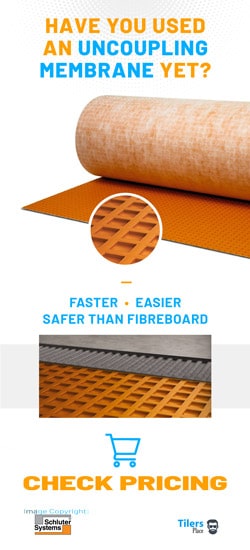How Porcelain Tile Is Certified
Porcelain tile vs ceramic tile, it’s been a debate that’s raged between tile manufacturers and distributors since Porcelain tile has been invented. The debate reached it’s peak in 2008 when the manufacturers (represented by the Tile Council Of North America (TCNA)) and the distributors (represented by the Ceramic Tile Distributors Association (CTDA)) formed a third-party organisation that sought to resolve the differences and help develop a standard that porcelain tile should conform to.

This newly founded group was named the Certification Agency For Porcelain Tile (PTCA)
Getting lost in the Acronyms? Don’t worry, that’s all of them.
The PTCA quickly established that a tile being impervious (a common tile term meaning a tile is resistant to water absorption) is simply not enough for a tile to be certified as “Porcelain”. In order for the tile to be certified as such, the manufacturer would need to provide five tile samples to be tested. If the tiles passed the ASTM C373 water absorption standards, the manufacturer would be able to display the PTCA Certification Mark on their products and had to renew their license every 3 years. This was to ensure manufacturers continued to produce tiles to that standard and didn’t let them slip after gaining that mark.
28 North American tile manufacturers were certified to produce authentic porcelain tiles and had the right to proudly display this fact on their packaging. Since porcelain tile can sell at a premium over ceramic tile, this was a big deal.
Porcelain Tile VS “Porcelain Tile”
Even with ASTM C373 being established, it didn’t mean the work of the PTCA was finished. It had to test the 70% of tile that’s imported into America. That’s right, America only produces 30% of it’s tile, the rest is imported from countries like Brazil, Italy, Indian and China. The tests conducted by the PTCA showed that many of the tiles that are marketed as “porcelain” are far from it.
In an independent test, 1,466 tiles were blind tested by the TCNA to determine whether they met water absorption criteria. Alarmingly, 23% of tiles that were marked as “Porcelain” failed the test. With a allowed absorption rate of 0.5, 336 tiles absorbed as much as 3%. These porcelain tiles were actually ceramic tile, masqueraded and sold as porcelain – deceiving customers and tile installers alike.
An Unwinnable War
With more tiles being imported, the PTCA is unable to test every single tile that lands on American soil for the water absorption standard. This is due to being a self-funded organisation with no official government help.
A way that you can check whether you are purchasing real porcelain tile is by looking for the PTCA Certification Mark on the tile carton. This is usually a large logo in either bright green or grey.
Please keep in mind that the logo may change in time and more disturbingly, some tile manufacturers may frequently mislabel their boxes and simply place the logo on tiles that are not certified porcelain.
To ensure you are buying true porcelain, you can go here to check whether the tile manufacturer is listed in the PTCA’s database of certified porcelain manufacturers. If in doubt, avoid the tile.



